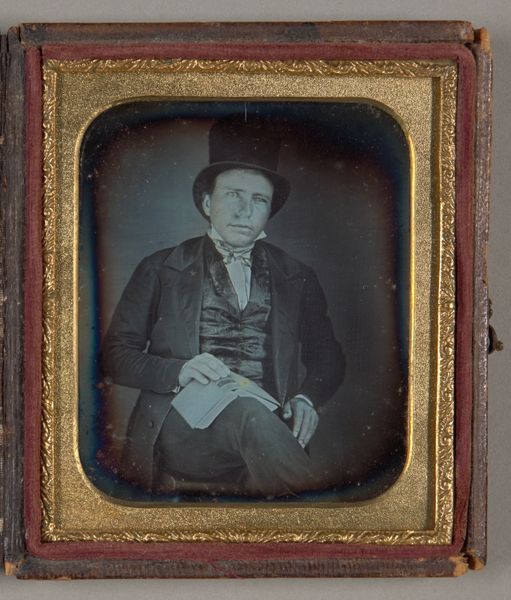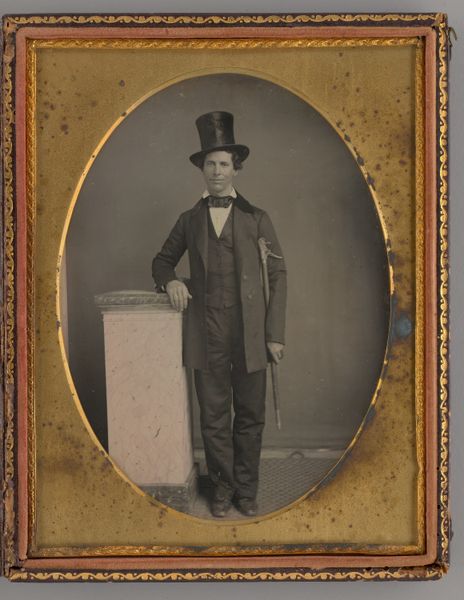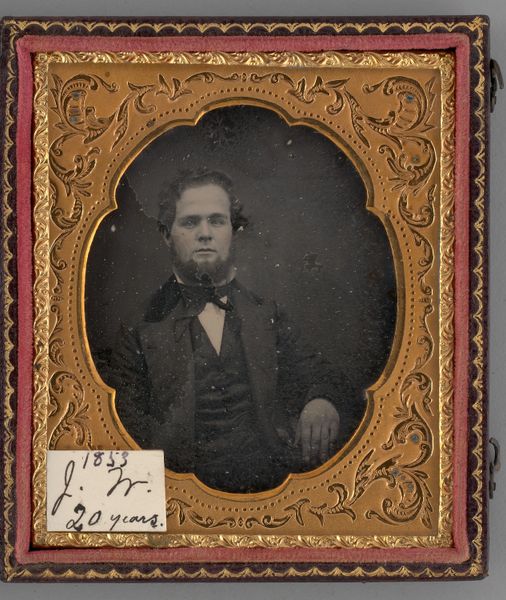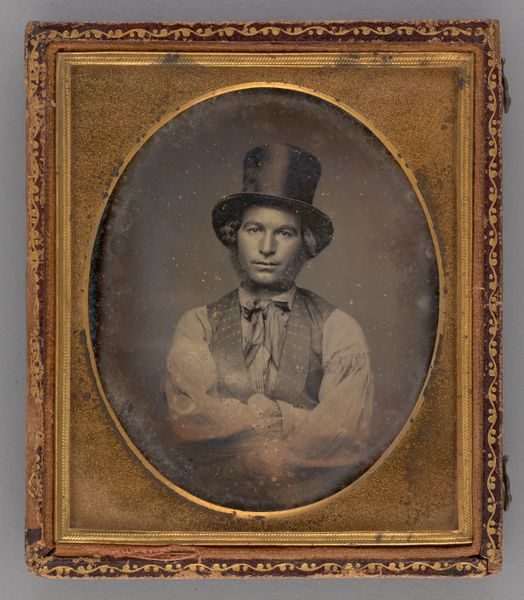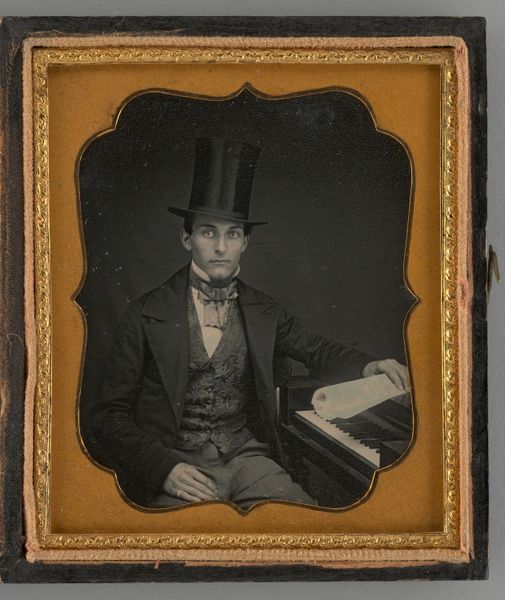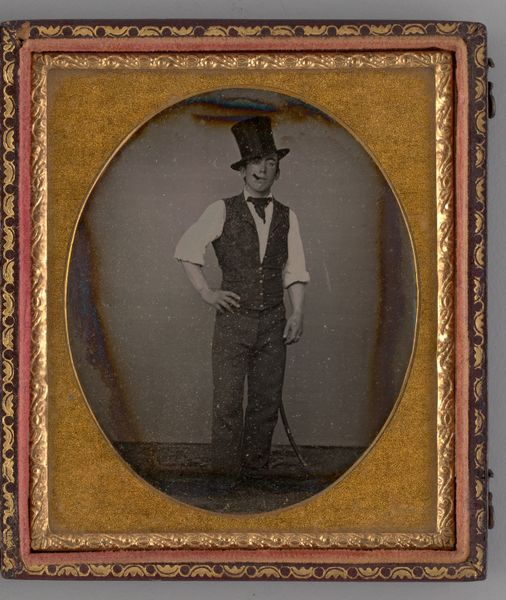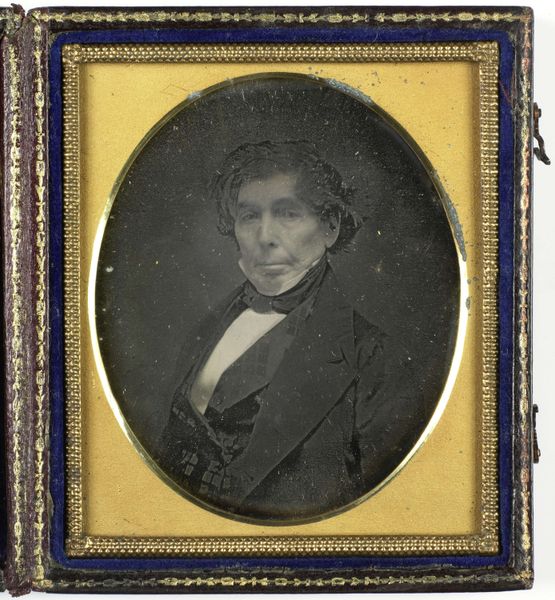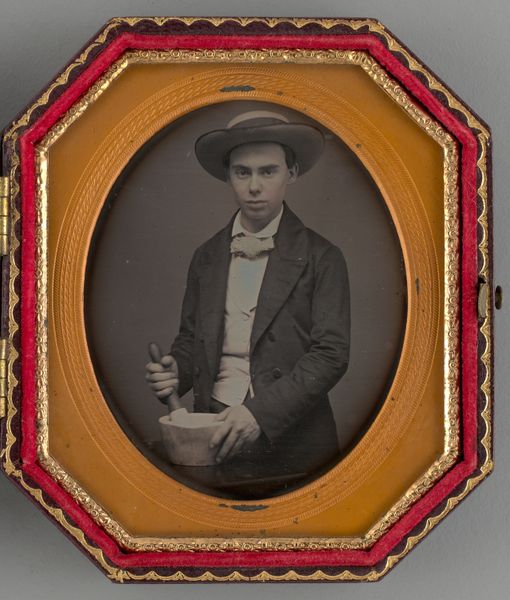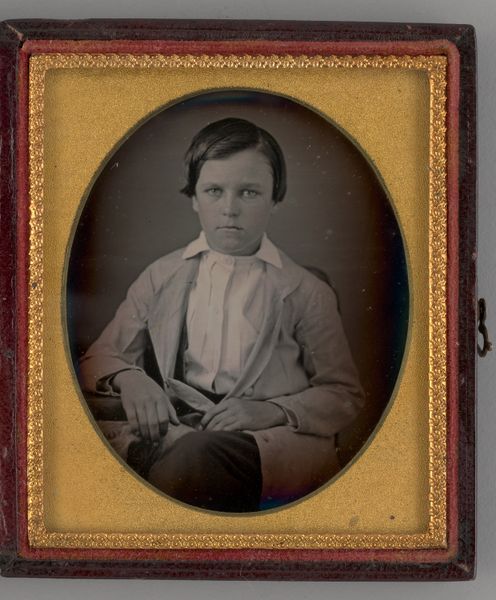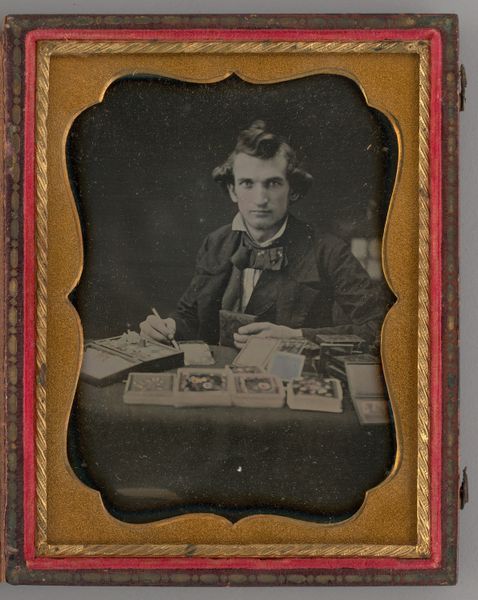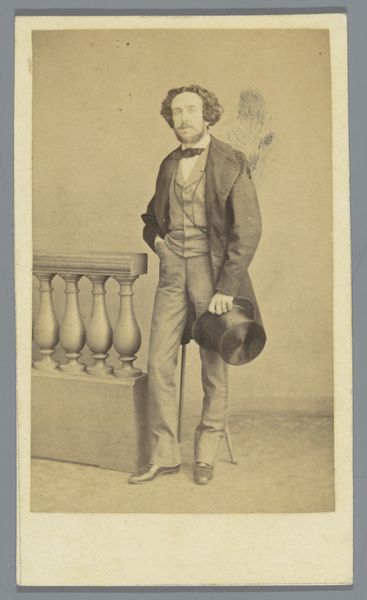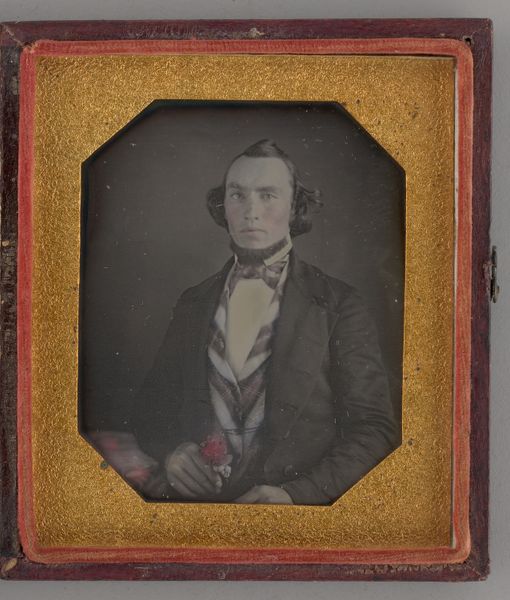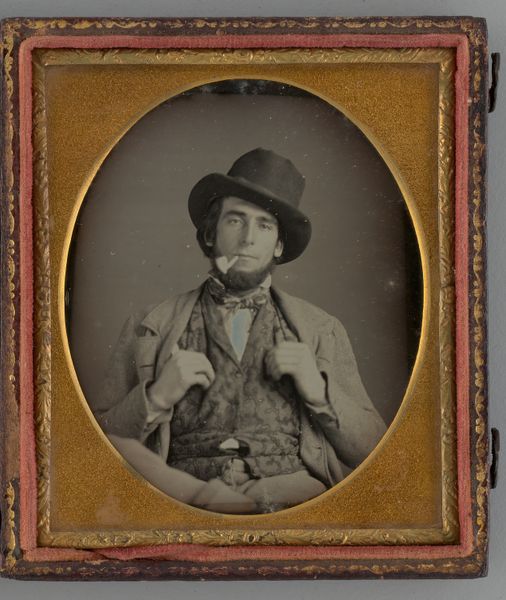
Untitled (Portrait of a Man Reading a Newspaper and Wearing a Top Hat) 1855
0:00
0:00
Dimensions: 8.2 × 6.9 cm (3 1/4 × 2 3/4 in., plate); 9.4 × 16.4 × 1.2 cm (open case); 9.4 × 8.2 × 1.7 cm (case)
Copyright: Public Domain
Curator: Here we have an untitled daguerreotype from 1855, housed at the Art Institute of Chicago. It depicts a man in a top hat, reading a newspaper. Editor: My initial impression is one of stillness. The man’s pose, the muted tones… it feels like a preserved moment of quiet contemplation. I wonder what news held his attention. Curator: Daguerreotypes were quite unique objects in the 19th century. Each one is a unique image on a silvered copper plate. Considering the social history, photography allowed for a new level of accessibility in portraiture that, before, had only been accessible through painting. Editor: Absolutely, and looking closely at the process, the reflective surface gives it a jewel-like quality. It is interesting to consider how the material—silvered copper—and the laborious method of developing the image, imbued these early photographs with an almost precious status. They are so small, too; often meant to be held. Curator: Right, it allowed for democratization of imagery, and these small daguerreotypes quickly became treasured objects of sentiment, replacing painted miniatures for many. And a portrait like this, featuring a man engaged in the very act of reading a newspaper, it speaks volumes about the burgeoning culture of information dissemination. This artwork provides valuable insight into how information and knowledge circulated in society at that time. Editor: He appears to be very intently involved in this newspaper. Newspapers were how information was passed, yes, but it's not merely that—it is that it created something tactile. It is a daily creation, subject to degradation, and then soon forgotten. In some ways, this daguerreotype is creating a sense of permanence, imbuing importance to a very mundane moment in his life. Curator: True. What strikes me is how photography as a medium affected the dissemination of public discourse and self-representation in 19th century America. How do we grapple with images produced under unequal conditions and power relations? The materiality of a photograph helps us historicize the images and appreciate the hands that once labored on them. Editor: Yes, seeing the image as an object with inherent qualities really helps contextualize the individual within a historical frame. It allows for greater understanding. Curator: Absolutely. Looking at images through both social context and material production really enriches the encounter. Editor: Indeed. By combining both, we can deepen our perception of that one, fleeting, captured moment.
Comments
No comments
Be the first to comment and join the conversation on the ultimate creative platform.
